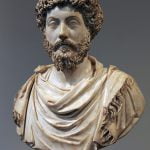In antiquity, camels were used for fighting purposes by many peoples. Camel riding was known, among others, by Arabs, Assyrians, Bactrians, Lydians, Medes, Persians, Syrians, and North African nomads.
The term “camel riding” (dromedary) is quite conventional because these animals were most often used to move troops, while a small part of the camel-mounted soldiers participated in the fight itself – the rest dismounted and fought in the formation of foot soldiers. In this arrangement, the war elephants deserve the title of riding, fighting directly from the back of which, as in the case of classic cavalry. By the force of tradition, however, we do not speak of “elephant riding”, but “camel riding”.
Female camels were most often ridden. This was due to the fact that female camels are simply faster than males. The war camels were sterilized so that an unexpected pregnancy would not exclude a valuable animal from the ranks. A camel can carry more weight on its back than a horse, so it happened that two wives were put on the camel’s back. The camel riders were usually armed with throwing weapons. Xenophon writes that the Persians riding camels were often armed with (two) bows.
Livy, describing the armament of the Arab camel’s cavalry, noted that, apart from the bow, the rider’s main armament (already single) was a narrow, 4-elbow long sword, apparently specially adapted to strike pedestrians from above. The Parthian riders of Artabanes in the days of Caracalla were armed with long throwing spears, and protective equipment was also common among them – rib helmets and chain mail, so it was a “heavy camel ride”.
Plutarch and Vegetius when describing a camel ride emphasized that, apart from endurance, camels are characterized by walking speed and have an advantage over horses over long distances, which is why these animals were often used to transport mail and by couriers. The ability to go without water for a long time and being unrefined when it comes to food are other advantages of camels over horses. Moreover, Vegetius writes that camels are able to instinctively find the way and direction of the march even in unknown terrain. From a military point of view, however, the most important thing is that horses unfamiliar with camels are simply afraid of these animals, just like elephants. You can find in ancient sources descriptions of skirmishes when three or four camels forced several dozen riders to flee.
As you can see, comparing a camel and a horse as a mount is more favourable for a camel. So why did these animals not spread into the “old world”?
The reason is simple. Well, camels have much more sensitive legs than horses. Their joints, muscles and tendons are much more susceptible to injuries than horses. Additionally, camels have very soft hooves. They are so soft that these wonderful animals are unable to travel anywhere other than desert or swampy terrain. Hard ground, rocky deserts and hills always mean one thing for the camels – the end of the march and the permanent handicap of movement.
Nevertheless, when used in the appropriate geographical zone, camels are an excellent weapon of war, as evidenced by their use by the army of the late Roman Empire.
The reasons why dromedarii did not become a frontline formation are obvious. The area and scope of their activities were, due to their specificity, limited, and the scale of the threat from the desert areas during the first two centuries of the empire – small. The scope of their activities in the 1st-2nd century CE was limited only to desert areas such as: Egypt, Syria, Palestine, and Arabia. However, they had other, no less important tasks that no one else could cope with. For this reason, it can be called dromedarii special units, as they fought in specific terrain conditions and had their own unique weapons and equipment. Among the tasks performed by the camel rider troops were: escorting caravans, patrolling important communication and supply routes, and conducting reconnaissance and courier service.







